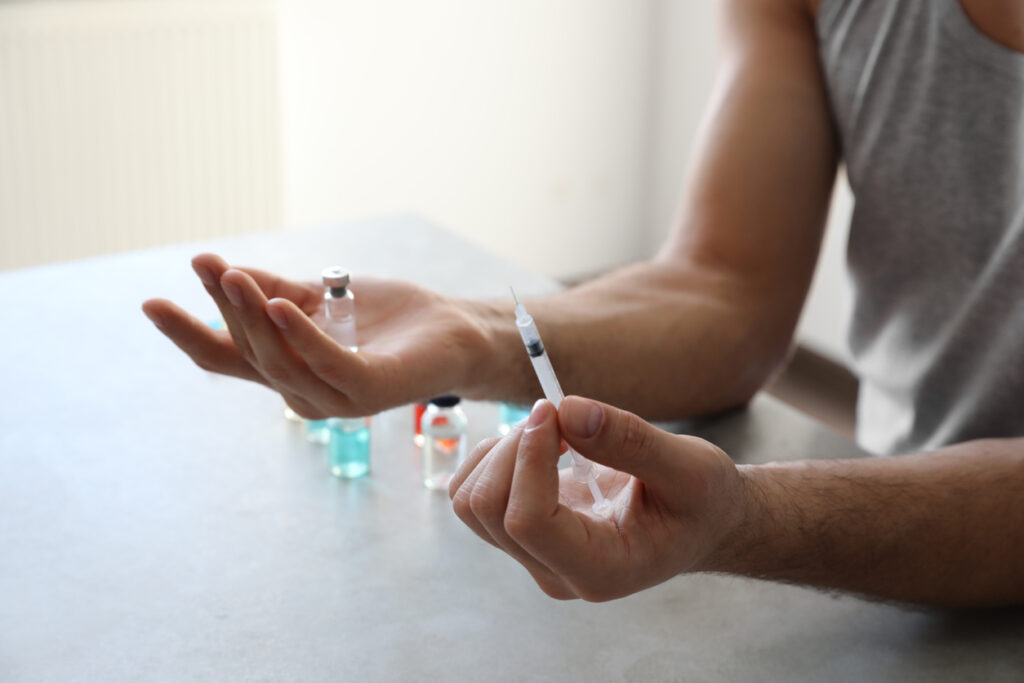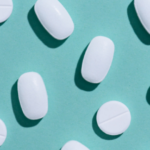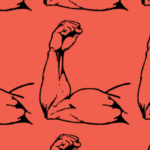Tiredness, irritability, difficulty concentrating, decreased libido, weaker erections and decreased muscle mass in middle-aged men have been recognised for well over 100 years. While the symptoms remained relatively constant, their diagnosis and treatment varied greatly over time.
Enter, “male menopause” or “andropause”. These are terms used to describe changes that some men experience as they get older, and are blamed on low testosterone or “low t”.
The symptoms are real, but they are non-specific. And a low testosterone level is probably not to blame. They could be due to all sorts of things that are far more common than truly low testosterone levels, including poor sleep, poor mental health, obesity, diabetes, cardiovascular disease, substance use or medication.
Can men go through menopause?
‘Menopause’ means ‘end of monthly cycles’, from the ancient Greek words ‘mēn’ (month) and ‘pausis’ (pause or cessation). Males don’t have monthly cycles in their biology; only females do. The term ‘andropause’ is sometimes used as an alternative to ‘male menopause’, but it’s just as problematic. The word derives from the ancient Greek word ‘andro’ (man or male). There is no stage of life when men stop being men.
Age-related changes in testosterone in males
There is no abrupt age-related end to males’ ability to reproduce, and no rapid decline in males’ sex hormones (like testosterone) at a particular stage of life, like there is for females during menopause. There might be a slight decline in the average testosterone levels in groups of men as they age —about 1-2% per year after about 40 years of age — but aging isn’t the cause in these cases, poor health is.
The evidence is undeniable.
This isn’t new. We have known about the negative effect of obesity on testosterone levels in aging men for at least 35 years. If you maintain a healthy weight and are disease-free, your testosterone level should be OK as long as you don’t have impaired testicular function (hypogonadism).
A small proportion of men (probably less than 1 in 100) have low testosterone levels from hypogonadism (low testicular function), with Klinefelter syndrome being the most common, often undiagnosed, cause. Some men develop disease or receive treatment for health problems, which reduces their testicular function. Testosterone treatment is needed in these cases.
In Australia, testosterone replacement therapy (TRT) must be prescribed by a medical practitioner, usually a GP, after evaluation by a specialist in sexual medicine or endocrinology, or by a urologist. Once started, testosterone therapy is usually continued for life with strict monitoring. TRT is very effective for those with legitimate androgen deficiency. For these men, we know the benefits of the treatment are substantial and outweigh the risks. But for others? It can be unnecessary and even dangerous. Misusing or abusing androgens has been linked to serious conditions, including cardiovascular disease, liver damage and brain damage, with side effects including gynaecomastia, acne and infertility.

A brief history of testosterone treatment
Testosterone treatment has a long history of being touted as a cure-all for men’s ill health.
Treating the symptoms of “male menopause” or “low T” with testosterone originates from the self-experimentation of Charles-Édouard Brown-Séquard in the 1880s. He gave himself injections of “of a liquid containing a small quantity of water mixed with the three following parts: first, blood of the testicular veins; secondly, semen; and thirdly, juice extracted from a testicle, crushed immediately after it has been taken from a dog or a guinea-pig… filtered through a paper filter”. He claimed miraculous improvements in his health and wellbeing from these treatments, which we now know could not have contained any testosterone (it doesn’t dissolve in water).
By the end of the 1890s it was obvious that this type of ‘organotherapy’ was unsuccessful. Instead, doctors tried grafting testicular tissue from monkeys and goats onto the testes of men. This didn’t work either, but a few unscrupulous doctors continued to perform the procedure for years. US doctor John Brikley performed the procedure for $750 (the equivalent of about $22,000 today) until he was deregistered in 1930.
Testosterone was isolated in 1935 and when synthetic versions began to become available, it started to be used to treat what was then called the ‘male climacteric’ (from the Greek word ‘klimacter’, meaning ‘rung on a ladder’ in reference to a stage of life). Studies from this time report either improvements in symptoms (such as fatigue, problems with concentration and memory, and restlessness, insomnia and irritability) in most men, or little or no improvement from treatment with testosterone.
In the 1940s, when testosterone was first being used, reliable ways to measure levels in the body were not available, so doctors didn’t know whether patients truly had low testosterone. If their symptoms improved with testosterone treatment, it was assumed that a lack of testosterone was the cause of symptoms in the first place. Charles-Édouard Brown-Séquard’s demonstration of the placebo effect in himself shows why such assumptions might be wrong.
If testosterone was a safe and effective treatment for the symptoms of ‘male menopause’, then why didn’t it take off? Well, it wasn’t really effective, and it wasn’t seen as being safe. The situation is still the same now. Testosterone treatment isn’t a simple fix for the non-specific symptoms of middle-aged males, and the unnecessary use of testosterone can have serious harmful effects.
Male menopause is a scam
Back in the day, interest in treating the symptoms of the “male climacteric” with testosterone was probably influenced by drug companies’ promotion of their new product. Similarly, psychotropic drugs like benzodiazepines and anti-depressants had periods of popularity as treatments after they became available and were successfully marketed by drug companies as cures for the symptoms of male menopause. Unfortunately, effective marketing has not translated into effective treatment.
The symptoms of male menopause aren’t going away. The complaints that were attributed to male menopause 100 years ago are the same ones that define “low T” today. The difference between then and now is that doctors aren’t grafting goat testes; they’re opening online clinics to sell testosterone at inflated prices to unsuspecting patients misled by podcast hosts and other influencers.
So, what should you do if you think you might have low testosterone or male menopause?
If you’re experiencing symptoms of low testosterone, go to see your doctor. They’ll discuss your symptoms, general health and habits, do a physical examination and order further testing if needed. An accurate diagnosis will help you find the right treatment.















